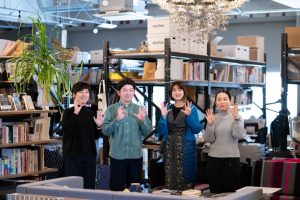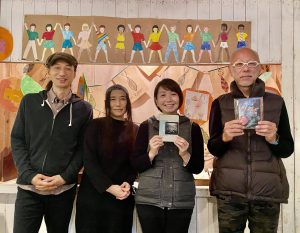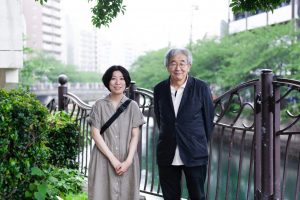Kouzushima Island, the fifth from the north of the Izu Islands, has a population of about 1,900 and is about a three-hours high-speed jet boat ride from Takeshiba Pier in Tokyo. Some people have theorized that the name of the island includes the Chinese character 神 (lit. god) because the gods who created the Izu Islands were supposed to have gathered on this particular island to consult with each other. Today, the island’s largest industry is fishing for splendid alfonsino (Beryx splendens) and lobsters, followed by tourism and agriculture.
The Tokyo Artpoint Project + Shimaclass Kouzushima General Incorporated Association (Kouzushima Island)
Next Tokyo Discovery Squad!
No.011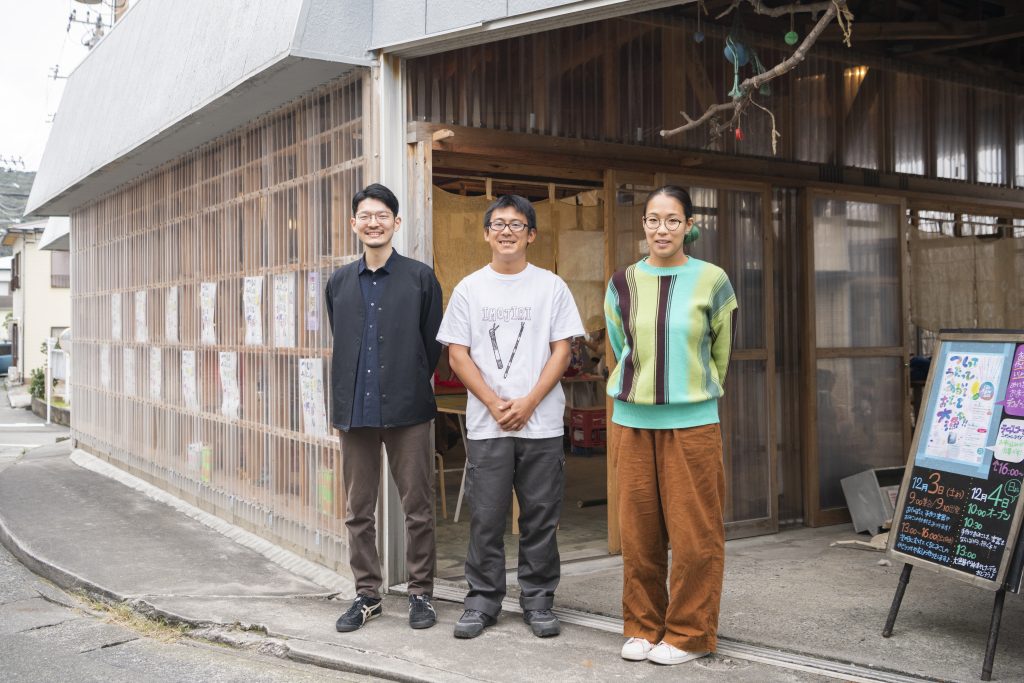
The Tokyo Artpoint Project, which is a joint project of the Tokyo Metropolitan Government, Arts Council Tokyo (Tokyo Metropolitan Foundation for History and Culture), and (various) nonprofit organizations, in aimed at creating a plethora of artpoints in Tokyo. Since its inception in 2009, the Tokyo Artpoint Project has conducted 45 projects in collaboration with more than 50 organizations.
In this second in our series of interviews with organizations participating in the Tokyo Artpoint Project, we take a look at Shimaclass Kouzushima General Incorporated Association, which runs the HAPPY TURN/Kouzushima art project on the island of Kouzushima in the Pacific Ocean. We interviewed Kei Nakamura and Tomoyo Iijima, both work for secretariat of the project, and Shunsuke Sakurai, a program officer of Arts Council Tokyo.
HAPPY TURN/Kouzushima explores happy island living
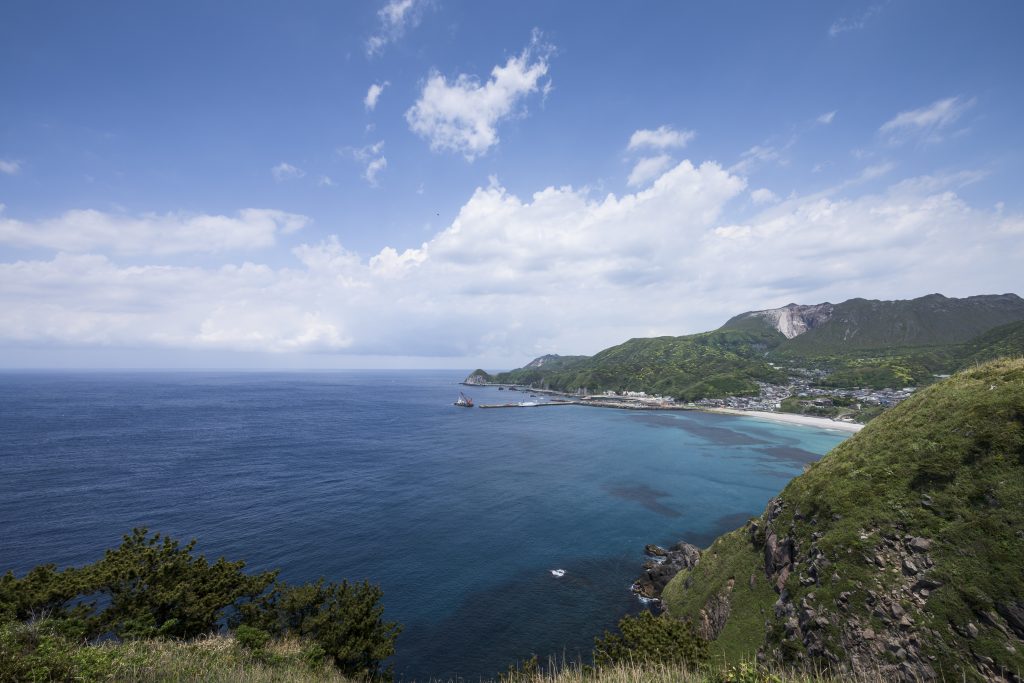
The art project HAPPY TURN/Kouzushima is conducted on this island centered on a 50-square meter space called Kuruto by Shimaclass Kouzushima General Incorporated Association. The association’s representative Kei Nakamura was born on Kouzushima. He left the island after graduating from junior high school to pursue higher education. Later, after working for a railroad company, he returned to his hometown at the age of 26.
“On the island, when someone returns from Tokyo, people tell them , ‘You must have closed up.’ In essence, they say that the returnee has come back after shutting down their activities in Tokyo. But in my case I didn’t ‘close up.’ I came back here to ‘open up.’ There are lots of fun things to do on this island, and I believe that people can be happy by doing them. That is at the root of my activities, and this is what I want to pass on to others.”
With this in mind, Mr. Nakamura returned to the island in 2015 to work as a member of the Kouzushima regional development team, and at the end of 2017, he founded Kouzushima Moriagetai (enlivening team) nonprofit organization.
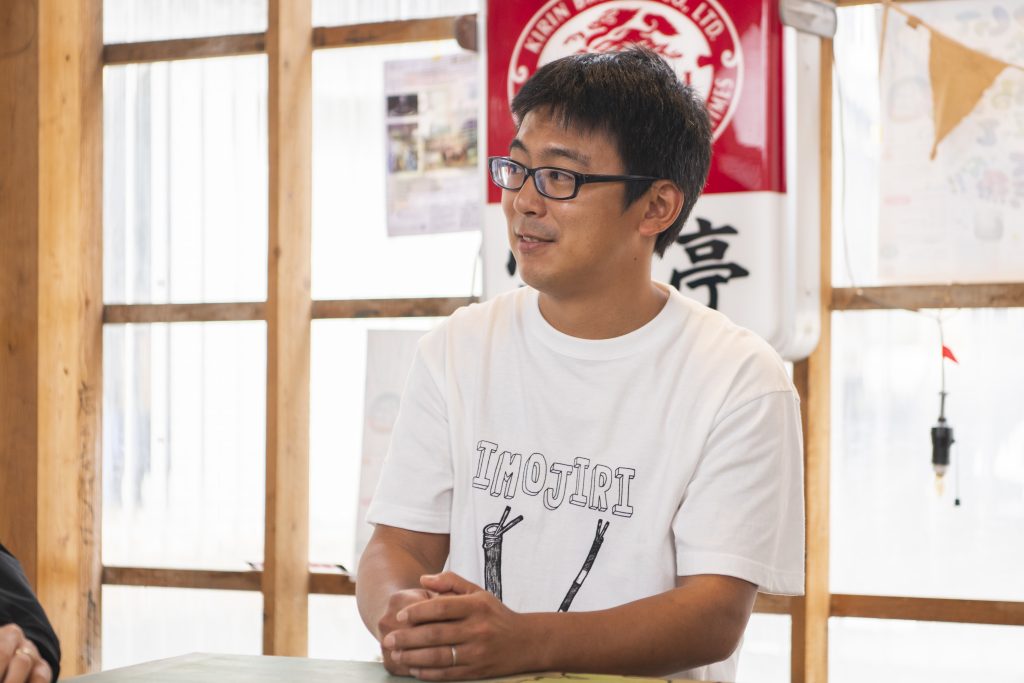
At that time, Arts Council Tokyo was looking for a partner to collaborate on the Tokyo Artpoint Project. For a number of years, the Tokyo Artpoint Project has been continuously implementing projects on other Izu Islands such as Miyakejima and Oshima, and has also been searching for potential next partners to work with in Izu Islands. In the course of this search, the staff members learned of existence of “an interesting person named Mr. Nakamura.” Mr. Nakamura’s idea that “everyone, including returnees and newcomers to the island, as well as residents who have always lived there should be able to involve themselves in the island’s life in their own way and learn from each other” was judged to overlap with the purpose of the Tokyo Artpoint Project. In 2018, HAPPY TURN/Kouzushima was launched as part of the Tokyo Artpoint Project.
Prior to starting the project, Mr. Nakamura prepared by putting together a team. The Tokyo Artpoint Project recommends a “three-person team” when creating a project secretariat.
“Under the slogan ‘a secretariat of three,’ we tell people that the secretariat should consist of three positions, namely the secretariat director, public relations officer, and accounting officer,” said Shunsuke Sakurai, a program officer of Arts Council Tokyo, who works with HAPPY TURN/Kouzushima.
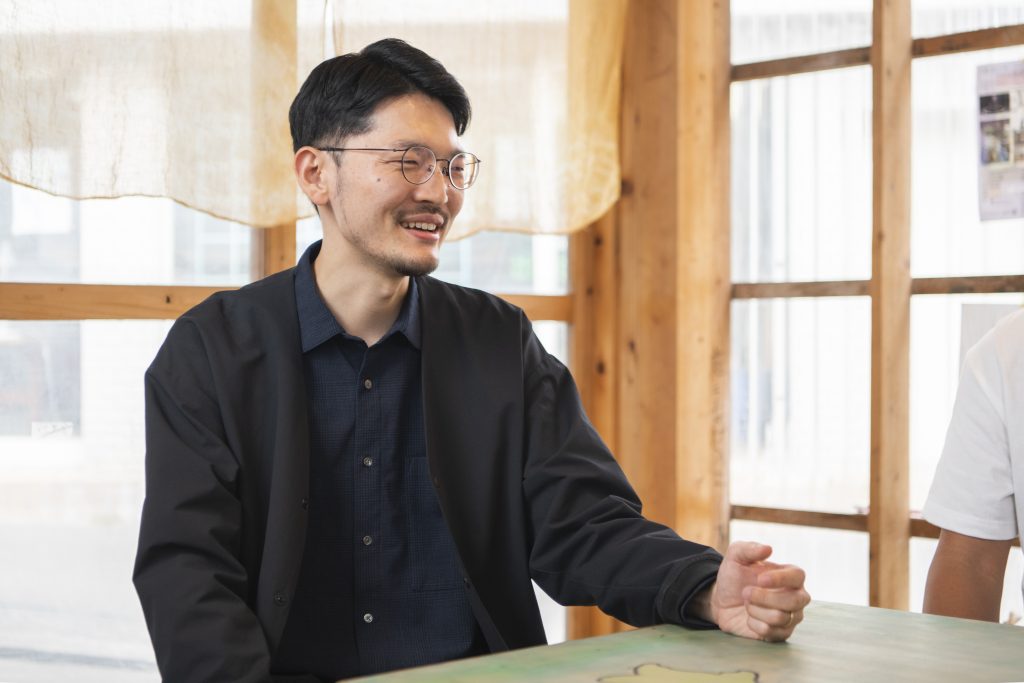
Accordingly, Director Nakamura approached Tomoyo Iijima, whom he had known for some time. Ms. Iijima is a native of Tochigi Prefecture. She used to travel to Kouzushima during the summer months to work at a beach house, but moved to the island later as a full-time resident, and became involved in the management of HAPPY TURN/Kouzushima. Another staff member, who is in charge of accounting, is currently on maternity leave.
“Until last fiscal year, the project was managed by three people,” said Ms. Iijima. “As soon as the number of staff was reduced to two, there were more conflicts of opinion. So, I felt that it was better to have at least three people in the secretariat. Currently, we have mothers who are in their child-rearing years and newcomers helping us manage the entire project as staff members. Since we now have a multi-person organization, opinions have become more diverse, and we are able to consider a wider range of possibilities for the project.”
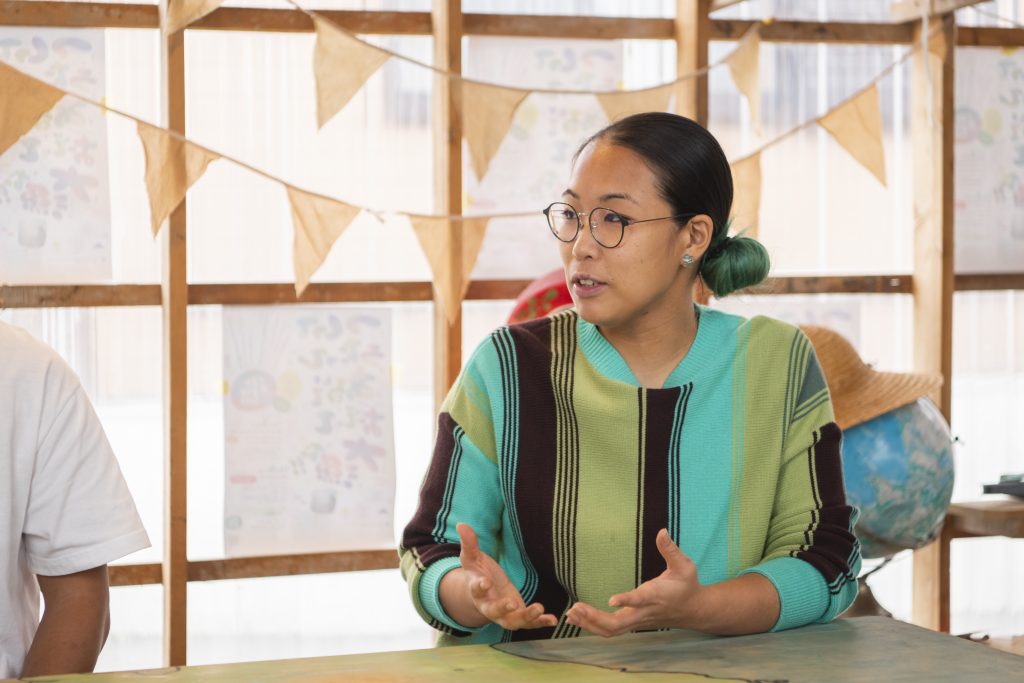
Purposeless base Kuruto and monthly newsletter
In the beginning, HAPPY TURN/Kouzushima tackled the task of creating a hub of operations. The hub is an important element for the Tokyo Artpoint Project to continue its activities. As Kouzushima was facing the problem of having an increasing number of vacant houses, members of the secretariat walked around the island and searched for properties. Mr. Nakamura explained, “We’ve investigated the number of vacant houses on the island and found that there are about 80 of them.”
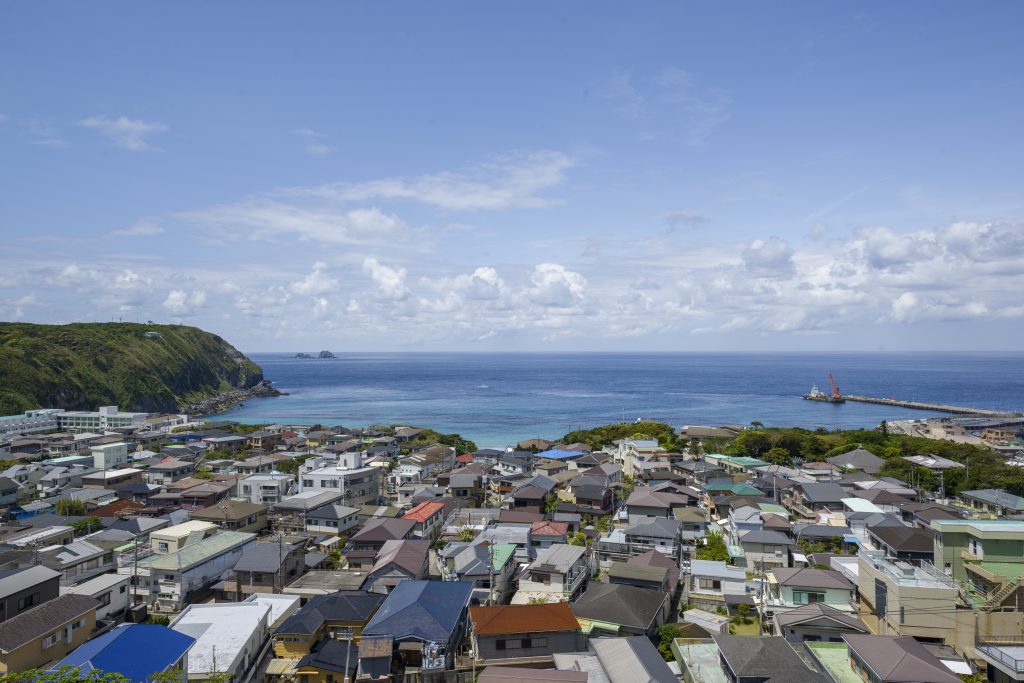
Once the location for the hub was decided, the team began by cleaning the property. The building had originally been a carpenter’s shed and contained a large amount of unused construction materials. However, Shinsuke Ouchi, who was in charge of the Arts Council Tokyo at that time, told the staff, “Please clean up the mess together without bringing in a contractor.”
“It is more efficient to have a contractor do the cleaning, but that would be the end of the process. It is difficult for people to get involved,” said Mr. Sakurai. “Creating an opportunity for people to get involved from the outset to make this a place where the surrounding community can take the initiative is a way to ensure that the number of participants will gradually increase. This is what the Tokyo Artpoint Project is all about.”
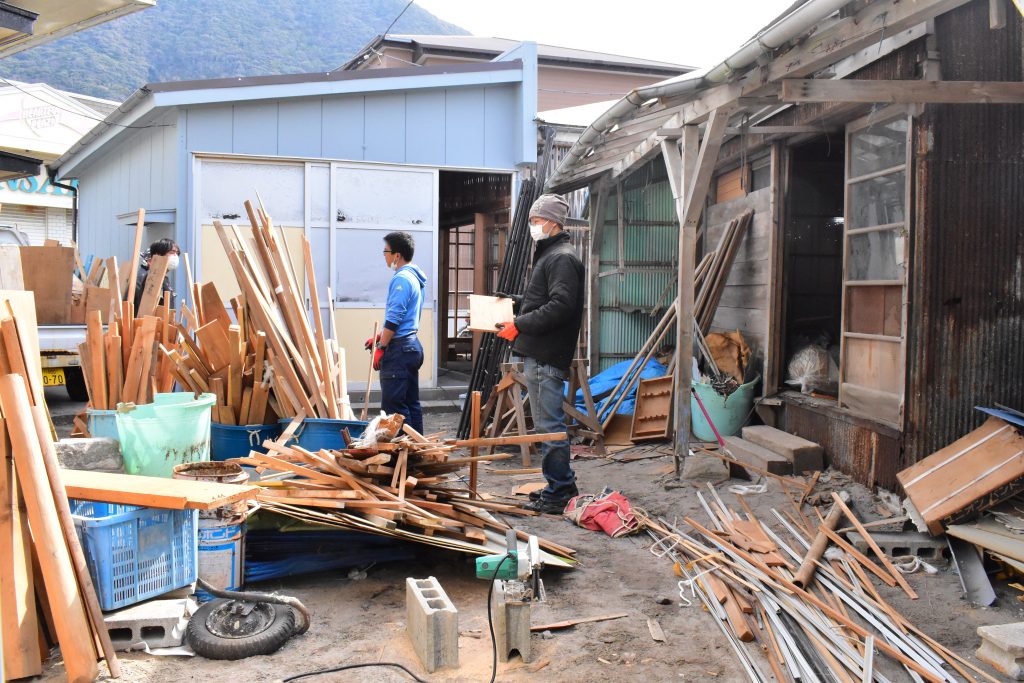
After about a year of tidying up, cleaning, and renovation, the current Kuruto was born. With a large blackboard at the semi-open-air entrance, chairs and desks inside, and music playing from speakers, Kuruto provides a place for relaxation, especially for children living on the island.
According to Ms. Iijima, during the lengthy renovation, she shared a policy with the staff of the Tokyo Artpoint Project and Iwasawa Bros., the artists involved in the hub’s renovation, of not giving specific answers when asked by islanders, “What is it going to be?” At the time, she felt frustrated that she was not at liberty to answer their questions, but later she realized that this attitude helped expand the possibilities of the space by not making it serve a fixed purpose such as a café or a rental space.
Ms. Iijima described the current state of Kuruto as follows: “We are trying to make this a place where people can come on a whim and do whatever they want, regardless of whether it is work or play. You can eat and drink here, but we don’t provide anything. You can practice hula dancing, but we don’t rent the entire space out. This space is intentionally designed to not have specific functionality.”
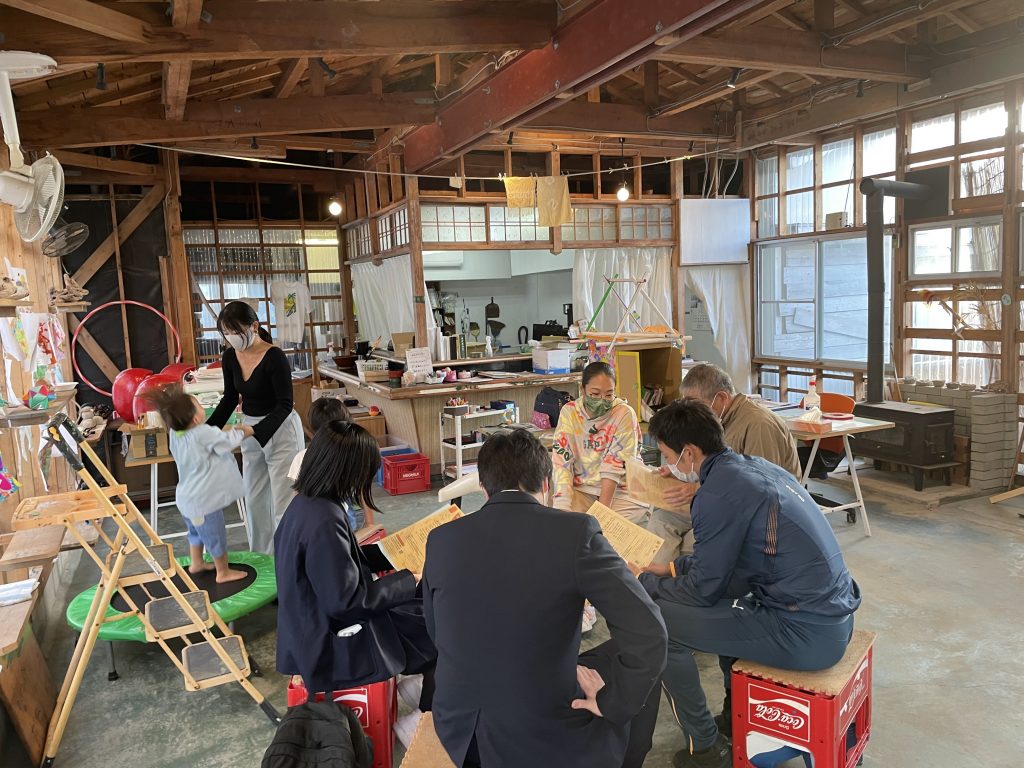
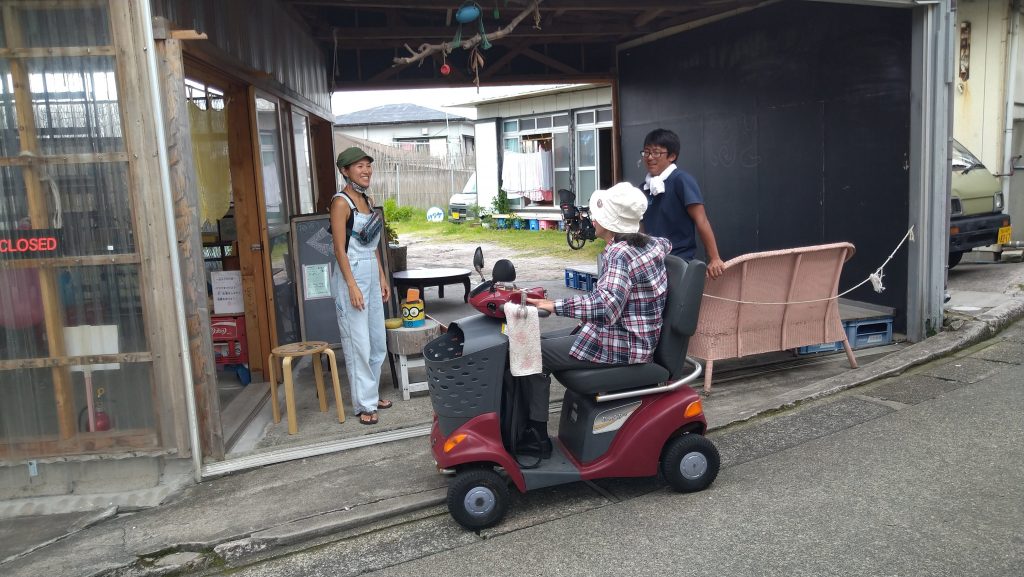
In addition to operating the space Kuruto, HAPPY TURN/Kouzushima distributes a monthly “Kuruto-no-Oshirase (Kuruto information).” This handwritten newsletter was launched several years ago and has been published once a month without fail. It consists of a single A4-size sheet containing a report on the activities carried out over the past month and the schedule for the following month, and is distributed to every household on the island. Creating a regular publication is another skill that has been cultivated by the Tokyo Artpoint Project.
“I saw case studies from other regions at at Jimu-Gym,’ an online social gathering of Artpoint projects, and started to imitate them,” said Ms. Iijima, who is in charge of producing “Kuruto-no-Oshirase.” People here used to say that they didn’t know what we were doing, but recently they have been saying, ‘You are the person who does that newsletter,’ so maybe we are slowly gaining traction.”
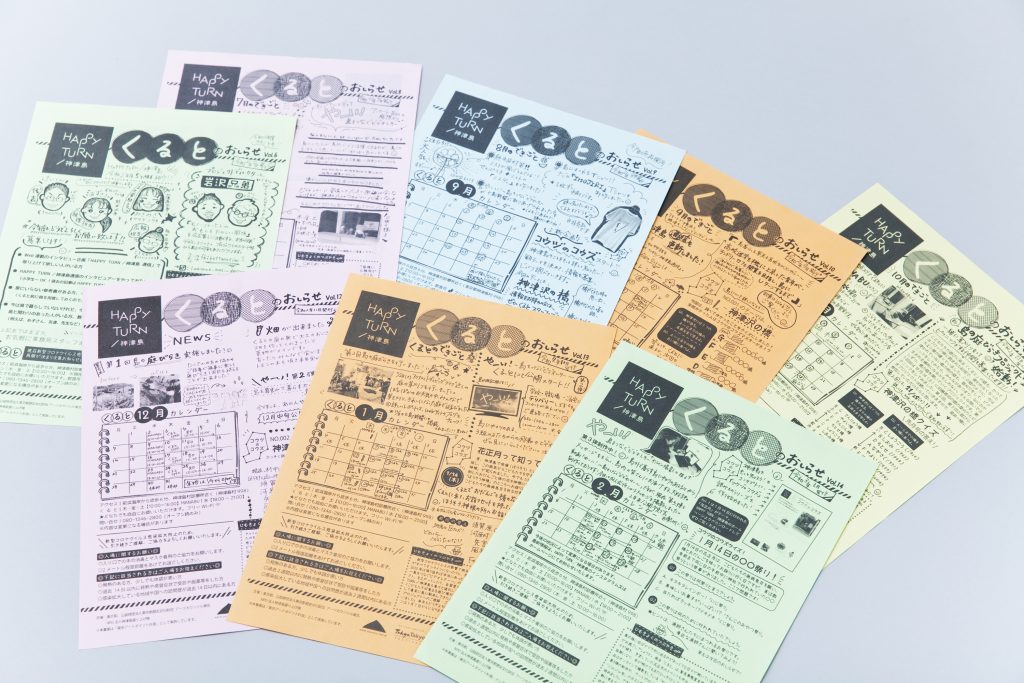
Photo: Hiroshi Takaoka
The reason why an art project is necessary for island life
HAPPY TURN/Kouzushima, the group that created the hub and publishes the newsletter, has also been running an artist program since fiscal 2021. Kentaro Onishi and Aiko Yamamoto joined this program in fiscal 2021, and they were joined by the artist collective OLTA and the musicians’ unit Tenniscoats in fiscal 2022.
“We have no expertise in art, so when we consulted with Mr. Sakurai as to who might be a suitable artist for the program, he suggested, ‘Maybe this person would be good,’ and off we went. I don’t think we would have been able to do this were it not for the program under the Tokyo Artpoint Project,” said Ms. Iijima.
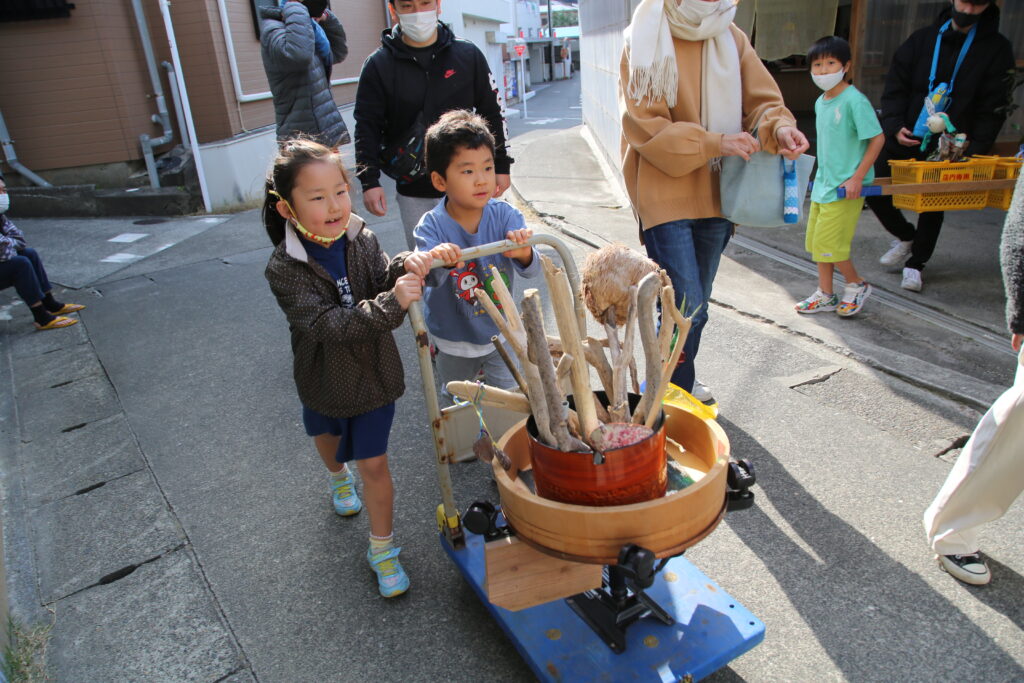
Photo: Momoko Oka
All of the artists visited the island to create works, hold workshops, and take part in performance events based on careful research. This was the first time for two of the members of the secretariat to work with artists.
“Taking part in Mr. Yamamoto’s plant-dyeing workshop was a great opportunity for me to learn about the ecosystem of the plants found on the island,” commented Mr. Nakamura. “In addition, OLTA interviewed many of the island’s residents, which gave us some insights into the history, way of life, and lifestyle of the island. We heard firsthand accounts about how agriculture, rather than fishing, used to thrive on the island, and about when the tourist industry began to become prominent.”
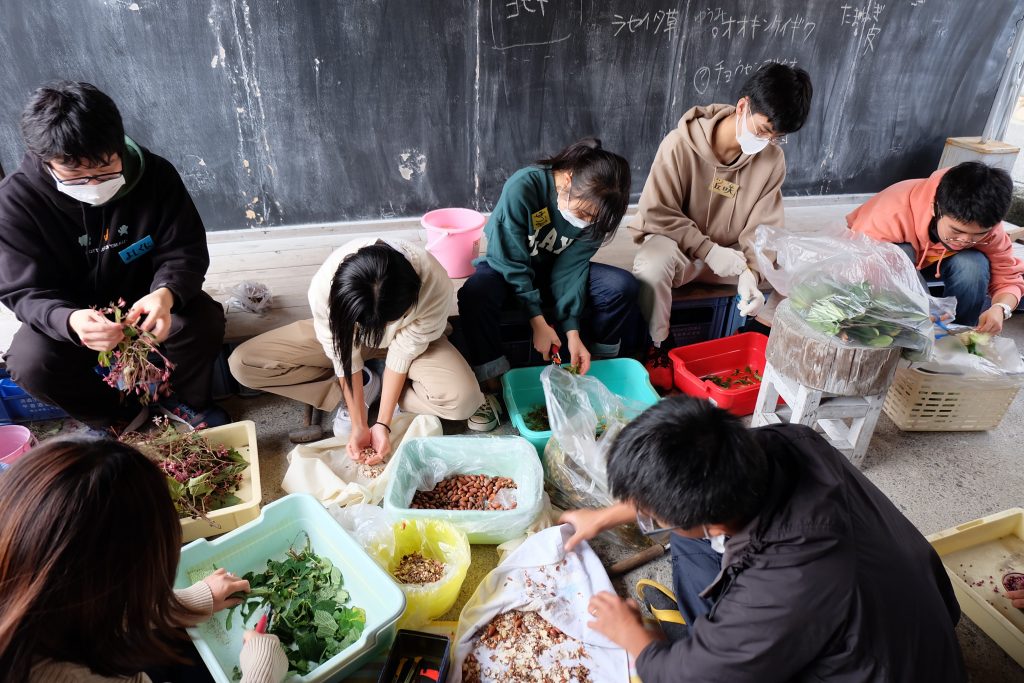
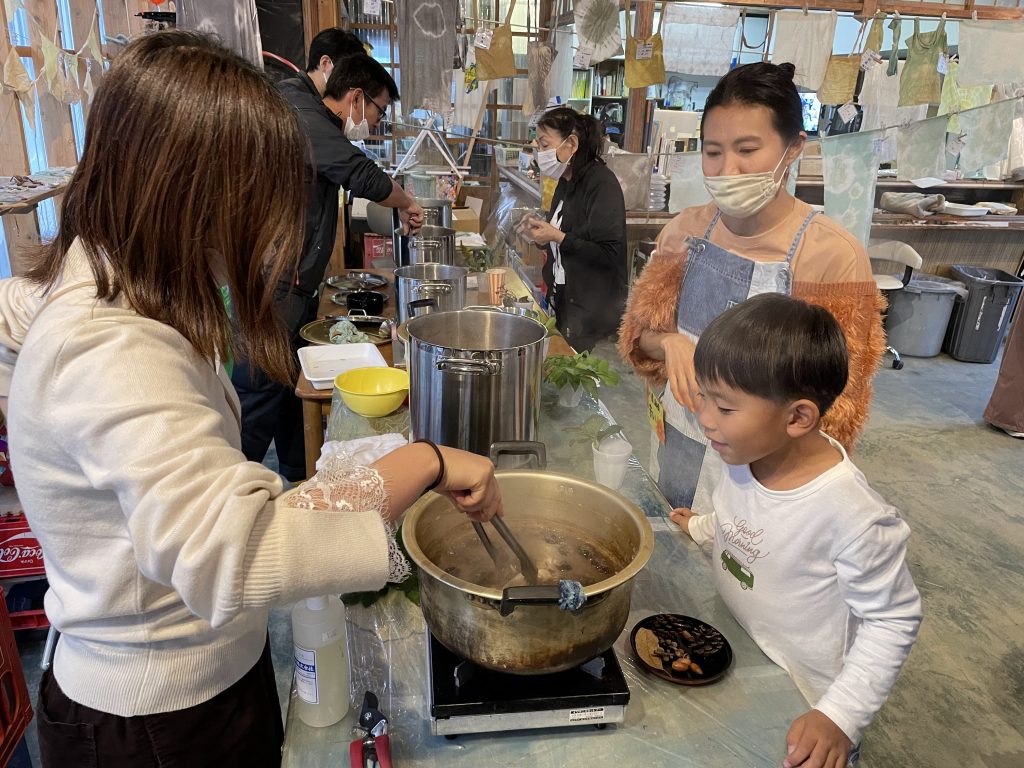
HAPPY TURN/Kouzushima, which started in 2018, is in its sixth year in 2023, and is now preparing to graduate from the Tokyo Artpoint Project. “Compared to the beginning, we have established some amazing relationships with people on the island, and created lively scenes on a daily basis.” Said Mr. Sakurai and continued, “Since we already have a foundation, I expect that from this point on we can continue the project by deepening our relationships with a wide range of people and further developing the structure.”
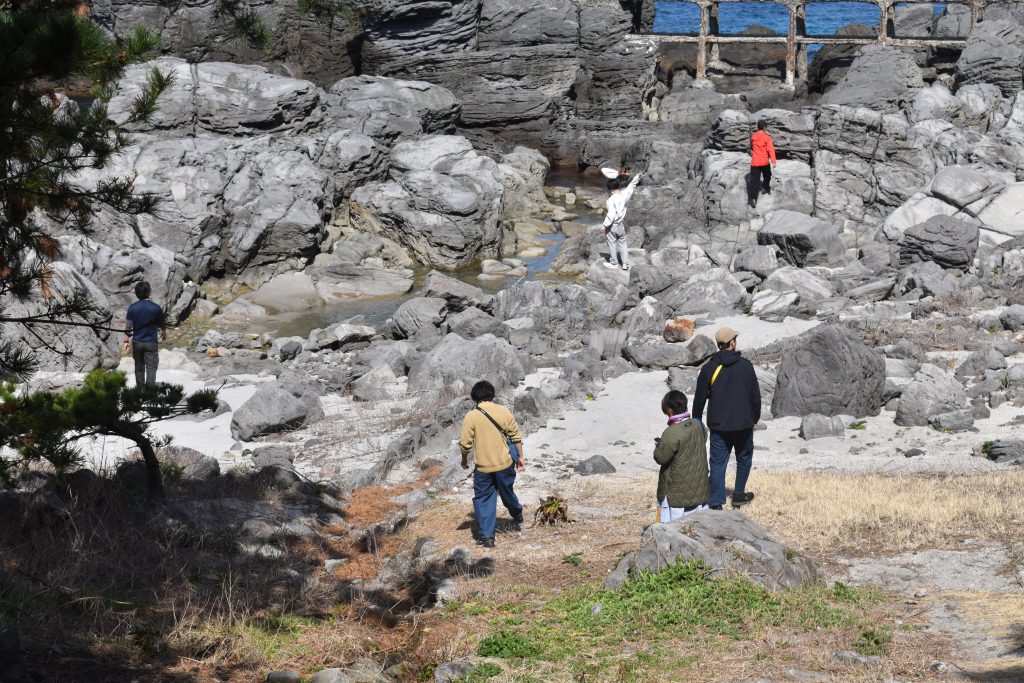
Mr. Nakamura shared his impressions of participating in the project. “There are many challenges and uncertainties, but my perspective has changed dramatically since I began to take part in the Tokyo Artpoint Project. Before starting this project, I used to think that all I needed to do was talk about what I wanted to convey. But I have learned that there are also ways to communicate messages slowly without being direct, as is the case with art.”
Ms. Iijima commented on how the art project had changed her, saying, “It has given me a new perspective.”
“I have found that it is better to proceed without setting clear and detailed objectives, to pay attention to what is happening in the process, and also to not immediately assume what is normal or usual based on one’s own opinions. Recently, I have been chattering a lotwith the mothers among the Kuruto hub area staff. For example, if a child brings a pot from home and bangs it, the surrounding people may be offended. But within the framework of Kuruto, I can praise such behavior by saying, ‘Well done, you’ve found yourself a musical instrument.’ There are all kinds of people on the island. It is like a microcosm of Japan. You will meet people here who have different ways of thinking that you probably never encountered before you came to the island. Later, when you met people with different backgrounds and ideas from your own, I think it is important to try to look at things from a different perspective, the way you did in Kuruto.”
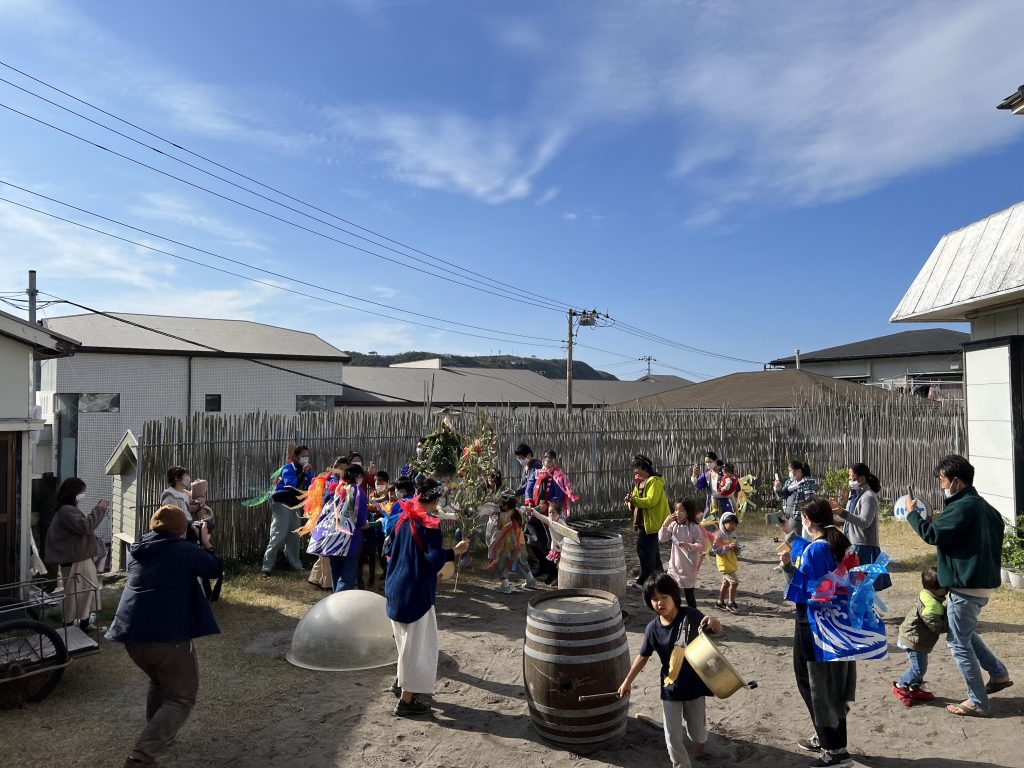
As for his future plans, Director Nakamura says, “I want to be an ‘uncle of the community’ who teaches people things that are not taught in school or at home.”
HAPPY TURN/Kouzushima explores happy living through art projects. This is a project that will gradually change the future of the island over time.
Japanese original text: Emi Sato
Photo: Yusuke Ono (excluding ※)
Translation: Kae Shigeno
Tokyo Artpoint Project
https://tarl.jp/en/about/tokyoartpoint/
Shimaclass Kouzushima General Incorporated Association
(Secretariat for HAPPY TURN/Kouzushima)
http://happyturn-kozu.tokyo/
998 Kouzushima-mura, Tokyo
MAIL: shimakurasu@gmail.com


